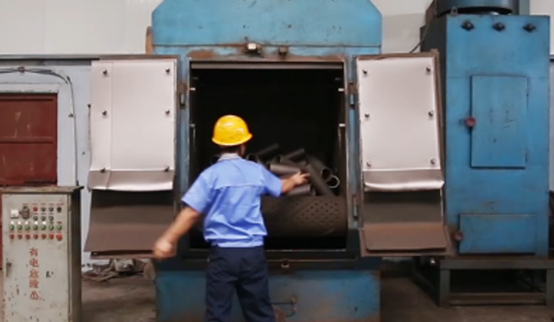 Afrikaans
Afrikaans  Albanian
Albanian  Amharic
Amharic  Arabic
Arabic  Armenian
Armenian  Azerbaijani
Azerbaijani  Basque
Basque  Belarusian
Belarusian  Bengali
Bengali  Bosnian
Bosnian  Bulgarian
Bulgarian  Catalan
Catalan  Cebuano
Cebuano  Corsican
Corsican  Croatian
Croatian  Czech
Czech  Danish
Danish  Dutch
Dutch  English
English  Esperanto
Esperanto  Estonian
Estonian  Finnish
Finnish  French
French  Frisian
Frisian  Galician
Galician  Georgian
Georgian  German
German  Greek
Greek  Gujarati
Gujarati  Haitian Creole
Haitian Creole  hausa
hausa  hawaiian
hawaiian  Hebrew
Hebrew  Hindi
Hindi  Miao
Miao  Hungarian
Hungarian  Icelandic
Icelandic  igbo
igbo  Indonesian
Indonesian  irish
irish  Italian
Italian  Japanese
Japanese  Javanese
Javanese  Kannada
Kannada  kazakh
kazakh  Khmer
Khmer  Rwandese
Rwandese  Korean
Korean  Kurdish
Kurdish  Kyrgyz
Kyrgyz  Lao
Lao  Latin
Latin  Latvian
Latvian  Lithuanian
Lithuanian  Luxembourgish
Luxembourgish  Macedonian
Macedonian  Malgashi
Malgashi  Malay
Malay  Malayalam
Malayalam  Maltese
Maltese  Maori
Maori  Marathi
Marathi  Mongolian
Mongolian  Myanmar
Myanmar  Nepali
Nepali  Norwegian
Norwegian  Norwegian
Norwegian  Occitan
Occitan  Pashto
Pashto  Persian
Persian  Polish
Polish  Portuguese
Portuguese  Punjabi
Punjabi  Romanian
Romanian  Russian
Russian  Samoan
Samoan  Scottish Gaelic
Scottish Gaelic  Serbian
Serbian  Sesotho
Sesotho  Shona
Shona  Sindhi
Sindhi  Sinhala
Sinhala  Slovak
Slovak  Slovenian
Slovenian  Somali
Somali  Spanish
Spanish  Sundanese
Sundanese  Swahili
Swahili  Swedish
Swedish  Tagalog
Tagalog  Tajik
Tajik  Tamil
Tamil  Tatar
Tatar  Telugu
Telugu  Thai
Thai  Turkish
Turkish  Turkmen
Turkmen  Ukrainian
Ukrainian  Urdu
Urdu  Uighur
Uighur  Uzbek
Uzbek  Vietnamese
Vietnamese  Welsh
Welsh  Bantu
Bantu  Yiddish
Yiddish  Yoruba
Yoruba  Zulu
Zulu snub pulley
Understanding the Snub Pulley A Vital Component in Mechanical Systems
The snub pulley, often referred to as a snubber or guide pulley, plays a crucial role in various mechanical systems, particularly within conveyor systems and transmission setups. Its primary function is to redirect the path of a belt or cable and maintain tension, preventing excessive slack or potential slippage. This article delves into the significance, applications, and underlying mechanics of the snub pulley, while highlighting why this seemingly simple component is essential for efficient machinery operation.
Functionality and Design
The snub pulley is typically mounted at an angle to guide the belt or cable, creating a deflection that effectively increases the contact surface area between the drive components
. This design is imperative for optimizing friction and improving traction, which is particularly beneficial in scenarios requiring high torque transmission. The increased curvature from the snub pulley allows for better force distribution across the belt, which can mitigate wear and extend the operational lifespan of both the pulleys and the conveying medium.In terms of construction, snub pulleys generally consist of a durable material such as steel or reinforced plastic, designed to withstand the stresses encountered during operation. They often feature robust bearings that facilitate smooth rotation, as well as a protective coating to enhance resistance against environmental factors such as moisture, dust, and extreme temperatures.
Applications of Snub Pulleys
Snub pulleys find applications across an array of industries. In manufacturing and material handling, they are essential components within conveyor systems, ensuring that products are transported efficiently from one location to another. By maintaining proper belt tension, snub pulleys help to reduce the risk of jams or misalignments that could disrupt operations.
snub pulley

In elevators and cranes, the snub pulley assists in cable guiding and tension maintenance, ensuring a safe and reliable lift. It also plays a part in vehicle systems, such as engine timing belts and alternator drives, where precise belt alignment is critical for performance and longevity.
Importance in Maintenance and Performance
Regular maintenance of snub pulleys is essential for maintaining optimal performance levels. Over time, factors such as belt wear, bearing degradation, and environmental exposure can negatively impact their functionality. Routine inspections can help identify potential issues before they lead to more significant failures in the overall system.
Knowing the correct tension settings and alignment for snub pulleys is vital. Incorrect adjustments can lead to undue strain on belts and associated components, resulting in premature wear or catastrophic failure. Therefore, manufacturers and operators must ensure that snub pulleys are installed and maintained according to industry standards and specifications.
Conclusion
In summary, the snub pulley, though often overlooked, is a critical component in many mechanical systems. Its ability to effectively guide belts and maintain tension ensures smooth operations across diverse industries. As the backbone of reliable machinery, understanding its functionality, design, and maintenance is crucial for engineers and operators alike. As technology continues to advance, the development of more efficient and durable snub pulleys will undoubtedly enhance the performance and reliability of mechanical systems globally, making them indispensable in modern engineering.
-
Revolutionizing Conveyor Reliability with Advanced Rubber Lagging PulleysNewsJul.22,2025
-
Powering Precision and Durability with Expert Manufacturers of Conveyor ComponentsNewsJul.22,2025
-
Optimizing Conveyor Systems with Advanced Conveyor AccessoriesNewsJul.22,2025
-
Maximize Conveyor Efficiency with Quality Conveyor Idler PulleysNewsJul.22,2025
-
Future-Proof Your Conveyor System with High-Performance Polyurethane RollerNewsJul.22,2025
-
Driving Efficiency Forward with Quality Idlers and RollersNewsJul.22,2025





























